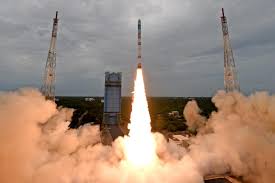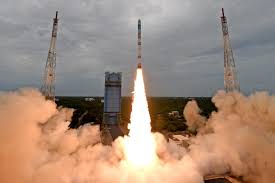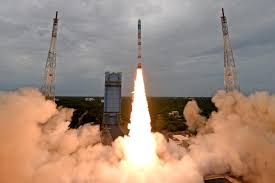ISRO SSLV-D3 MISSION
ISRO SSLV-D3 MISSION

Table of Contents
Introduction
The Indian Space Research Organisation (ISRO) is set to launch the SSLV-D3 (Small Satellite Launch Vehicle – Development Flight 3) mission on India’s Independence Day. This mission marks a significant milestone in India’s space exploration efforts and holds the potential to transform the country’s satellite launch market. The SSLV-D3 is designed to be a cost-effective and flexible solution for launching small satellites, addressing the growing demand in this segment. This article explores the details of the SSLV-D3 mission, its significance, and the broader implications for India’s satellite launch market.ISRO SSLV-D3 MISSION
The SSLV-D3 Mission: Key Details
1. Background and Development
The SSLV is ISRO’s newest rocket, developed to provide on-demand launch services for small satellites. Unlike the larger Polar Satellite Launch Vehicle (PSLV) and Geosynchronous Satellite Launch Vehicle (GSLV), the SSLV is designed for rapid assembly and cost-effective launches. The development of the SSLV began in response to the increasing global demand for launching small satellites, which are used for a variety of applications, including Earth observation, communication, and scientific research.
The SSLV-D1 and SSLV-D2 missions were previous test flights that provided valuable data for refining the vehicle’s design and performance. SSLV-D3 builds on these experiences, aiming to demonstrate the vehicle’s readiness for regular operational launches.
2. Mission Objectives
The primary objective of the SSLV-D3 mission is to validate the design and performance of the SSLV under operational conditions. This includes testing the vehicle’s ability to deploy multiple small satellites into their designated orbits with high precision. Additionally, the mission aims to showcase the SSLV’s rapid turnaround time and its ability to support on-demand launch services.
The payload for the SSLV-D3 mission includes a mix of commercial, academic, and research satellites. These satellites will be deployed into low Earth orbit (LEO), where they will conduct various missions, such as Earth observation, communication, and scientific experiments.ISRO SSLV-D3 MISSION
3. Technical Specifications
The SSLV is a three-stage vehicle, primarily powered by solid propellants. It stands about 34 meters tall and has a lift-off mass of approximately 120 tons. The SSLV is designed to carry payloads weighing up to 500 kilograms to a 500-kilometer Sun-synchronous orbit (SSO) or up to 300 kilograms to a geosynchronous transfer orbit (GTO).

One of the key features of the SSLV is its modular design, which allows for quick assembly and integration. This enables a faster turnaround time between launches, making the SSLV an attractive option for customers who require timely access to space.
Significance of the SSLV-D3 Mission
The successful execution of the SSLV-D3 mission could have far-reaching implications for India’s satellite launch market. Here are some of the key reasons why this mission is so significant:
1. Meeting the Growing Demand for Small Satellite Launches
The global space industry has seen a surge in the demand for small satellite launches. These satellites, which typically weigh less than 500 kilograms, are used for a wide range of applications, including Earth observation, communication, and scientific research. Traditional launch vehicles, like the PSLV and GSLV, are optimized for larger payloads and may not be the most cost-effective option for launching small satellites.ISRO SSLV-D3 MISSION
The SSLV is specifically designed to address this market gap. By offering a dedicated and cost-effective launch solution for small satellites, ISRO can tap into the growing demand and attract both domestic and international customers.
2. Cost-Effectiveness and Flexibility
One of the major advantages of the SSLV is its cost-effectiveness. The vehicle’s design and manufacturing processes have been optimized to reduce costs, making it an attractive option for small satellite operators. Additionally, the SSLV’s modular design allows for rapid assembly and integration, which can significantly reduce the lead time for launches.
This flexibility is particularly important for customers who require timely access to space. For example, Earth observation satellites often need to be launched at specific times to capture data under optimal conditions. The SSLV’s ability to support on-demand launches makes it a valuable asset for such missions.
3. Enhancing India’s Competitive Position in the Global Space Market
The global space launch market is highly competitive, with several countries and private companies vying for a share of the growing demand. By developing the SSLV, ISRO is positioning itself as a key player in the small satellite launch segment. The successful execution of the SSLV-D3 mission could enhance India’s reputation as a reliable and cost-effective launch service provider.ISRO SSLV-D3 MISSION
In recent years, ISRO has made significant strides in the international space market, securing contracts for launching satellites for various countries and private companies. The SSLV-D3 mission represents another step forward in this direction, demonstrating ISRO’s capability to provide a full spectrum of launch services, from small to large payloads.
4. Boosting Domestic Space Industry
The SSLV-D3 mission is also expected to have a positive impact on India’s domestic space industry. The development and manufacturing of the SSLV involve collaboration with various Indian companies, fostering innovation and technological advancements within the country. This collaboration not only strengthens the capabilities of Indian aerospace companies but also creates job opportunities and contributes to economic growth.ISRO SSLV-D3 MISSION
Moreover, the availability of a dedicated launch vehicle for small satellites can spur the growth of India’s satellite manufacturing sector. Startups and research institutions can benefit from the reduced launch costs and increased access to space, driving innovation and the development of new space-based applications.
5. Strategic and National Security Implications
In addition to its commercial and economic benefits, the SSLV-D3 mission holds strategic significance for India. The ability to launch small satellites on demand can enhance India’s capabilities in areas such as Earth observation, communication, and navigation. These capabilities are critical for various applications, including disaster management, national security, and scientific research.ISRO SSLV-D3 MISSION

Furthermore, the development of the SSLV aligns with India’s broader space policy objectives, which aim to strengthen the country’s self-reliance in space technology and expand its presence in the global space market.ISRO SSLV-D3 MISSION









